

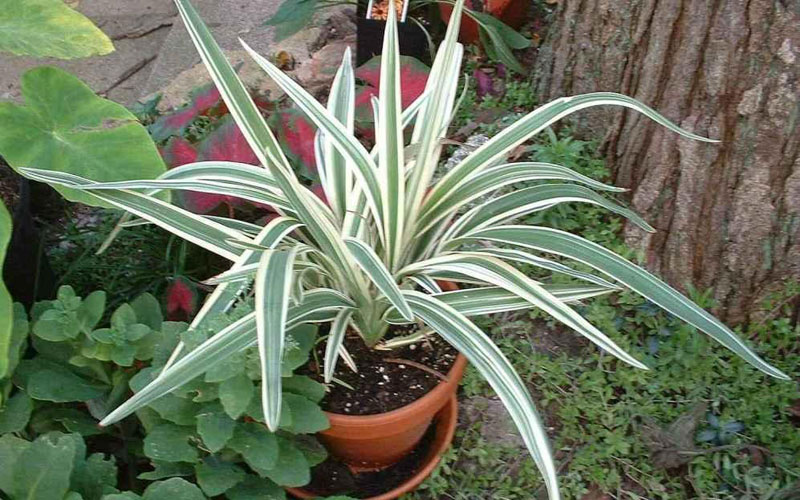
Dianella tasmanica ‘Variegata’ (White Striped Tasman Flax Lily) – This 1 to 2 foot tall variegated form of the Tasman Flax Lily is grown for its bold white striped leaves. The small flowers, which appear in mid spring, have pale violet sepals with white striped green petals and are followed by attractive dark blue berries. Best in light shade but will take full coastal sun in well-drained soil. Give regular to occasional water. It is hardy to about 20-25 degrees F. This description is based on our research and the observations we have made of this plant as it grows in containers at our nursery, in our own garden and in other gardens. We also appreciate receiving feedback of any kind from those who have additional information about this plant, particularly if they disagree with what we have written or if they have additional cultural tips that would aid others in growing Dianella tasmanica ‘Variegata’.
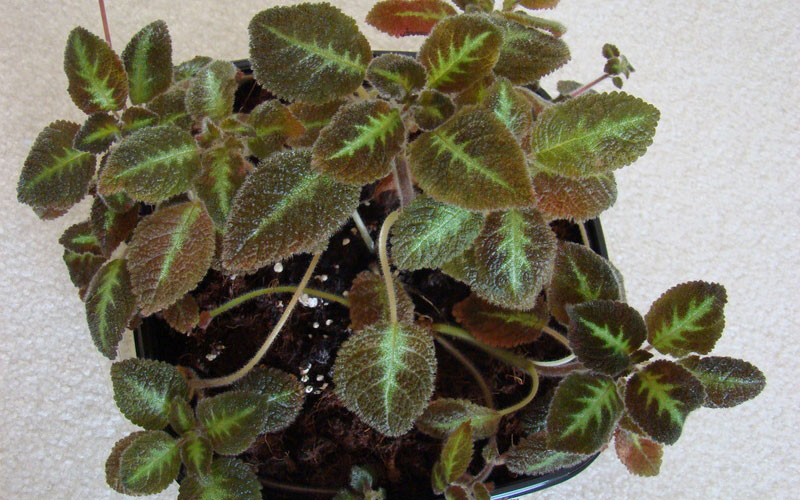
Episcia is a genus of 10 species belonging to the flowering plant family Gesneriaceae. The species are found in the tropical regions of Central America and South America (frequently cultivated elsewhere and sometimes naturalizing in tropical regions). The species are perennial herbaceous plants characterized by a stoloniferous habit, red (rarely orange, pink, blue or yellow) flowers, and frequently have marked or patterned leaves. They are grown in the tropics, and in temperate regions as houseplants, primarily for their attractive foliage. Numerous cultivars have been produced, primarily by selection and hybridization of the species
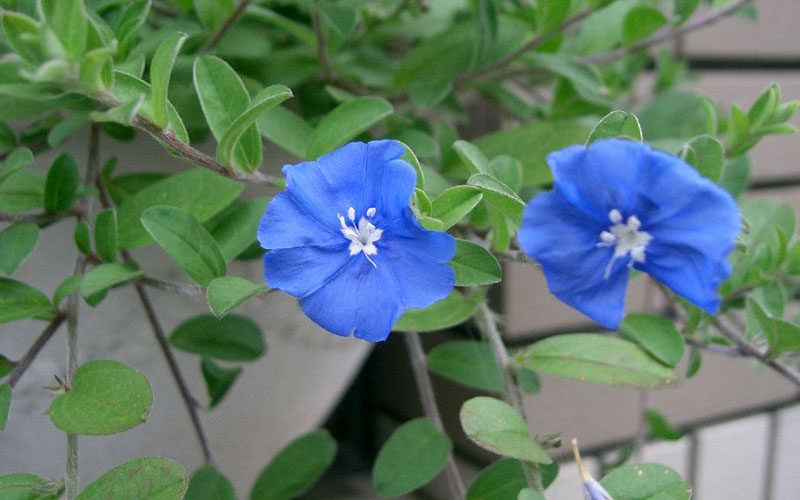
Evolvulus is a genus of flowering plants in the Convolvulaceae, the morning glory family. They are known generally as dwarf morning glories. Most all are native to the Americas. There are about 100 species
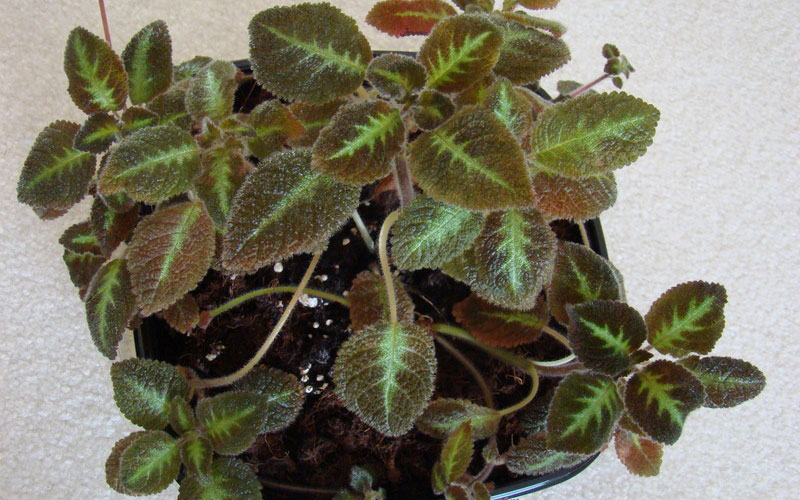
Fittonia verschaffeltii is a species of tropical plant native to Peru. Its stem is covered in hair. The veins of the leaves are usually white, but colors vary with cultivar. It is suitable as a house plant.
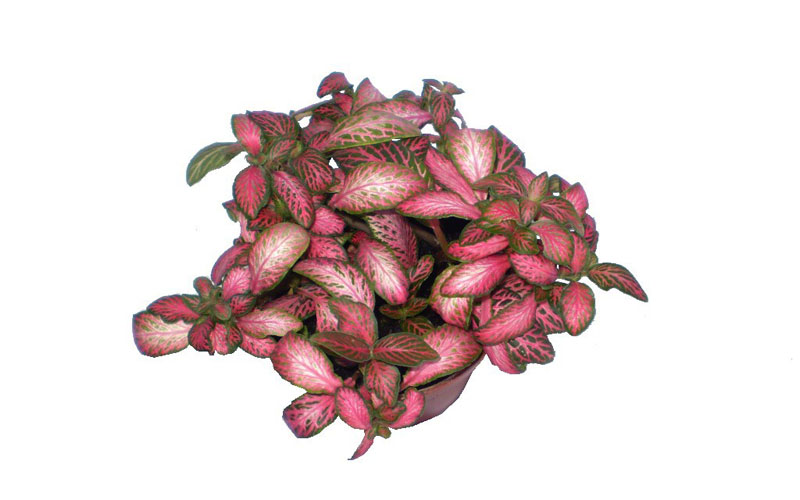
Nerve plant (also known as Fittonia) is a wonderful tropical houseplant for tabletops, hanging baskets, and terrariums. It adds a distinctive touch to indoor decor because nerve plant’s rich green leaves are touched with bright pink, red, or white veins. It looks outstanding in pots that play off the colors of the veins, but contrasting colors also make an outstanding impression.
Because nerve plant is a small houseplant, it’s perfect for homes and offices. It’s an easy way to add beautiful color to your indoor decor.
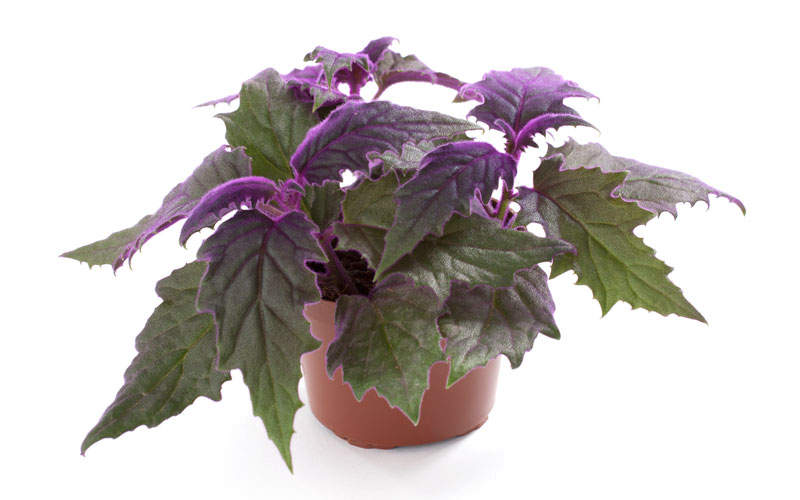
The best known species is Gynura aurantiaca, often grown as a house plant. This plant is commonly known as “Purple Passion” because of the velvety purple leaves.
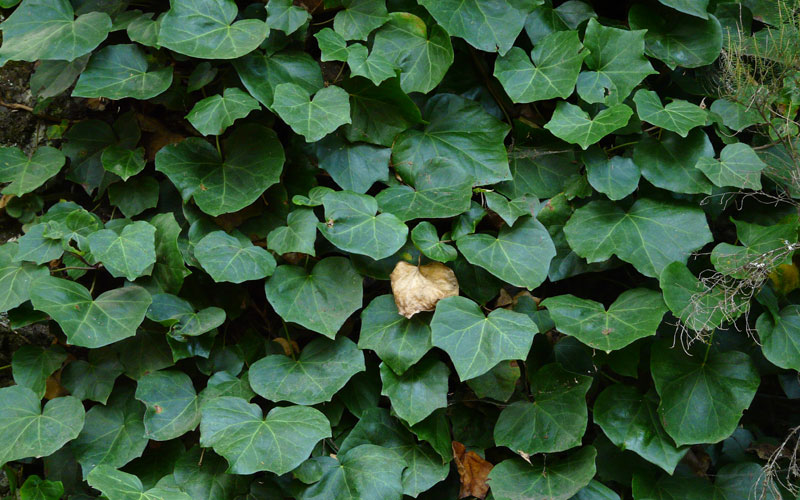
Hedera, commonly called ivy (plural ivies), is a genus of 12–15 species of evergreen climbing or ground-creeping woody plants in the family Araliaceae, native to western, central and southern Europe, Macaronesia, northwestern Africa and across central-southern Asia east to Japan and Taiwan.
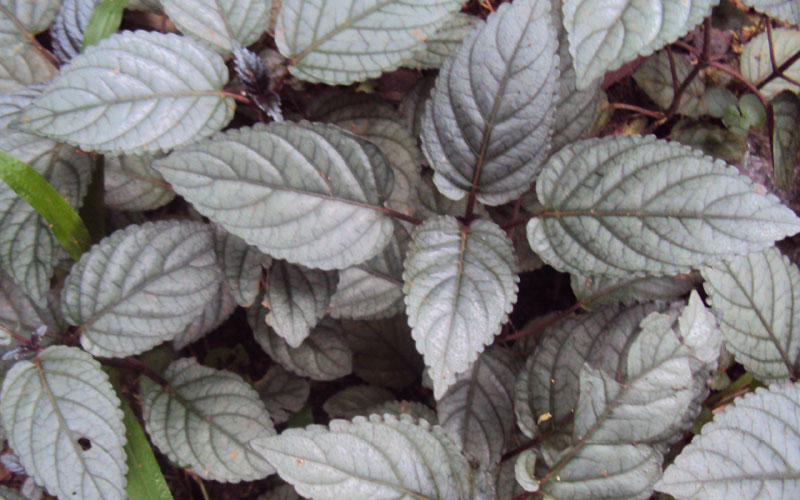
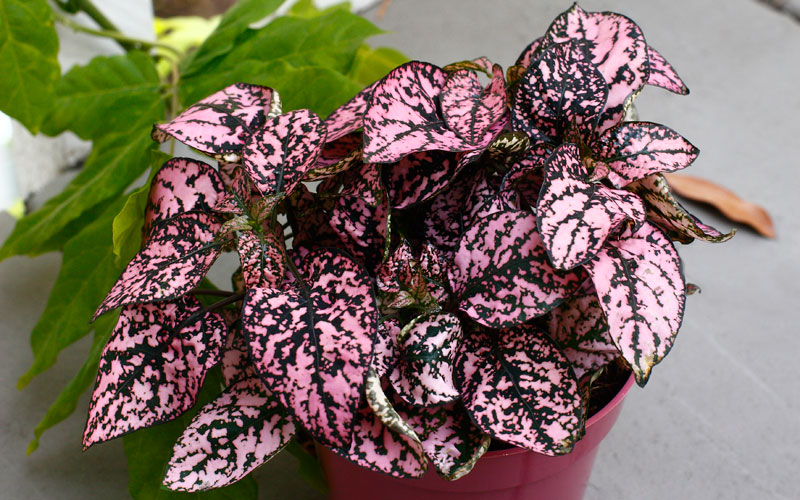
The Polka Dot plant, Hypoestes phyllostachya, needs bright light but not full sun.
Polka Dots grow best in a humid environment, so occasional misting is helpful for the lushest foliage.
Polka Dot plants are sensitive to chemicals so it is a good idea to water this plant with rainwater or tap water which has been allowed to set for 24 hours so that chlorine and other chemicals can dissipate from it. The soil should be kept slightly moist.
Polka Dots tend to get leggy with age, so keep it pinched back to no taller than about 16 inches.
These plants won’t be harmed at all if you feel the need to cut them back hard.
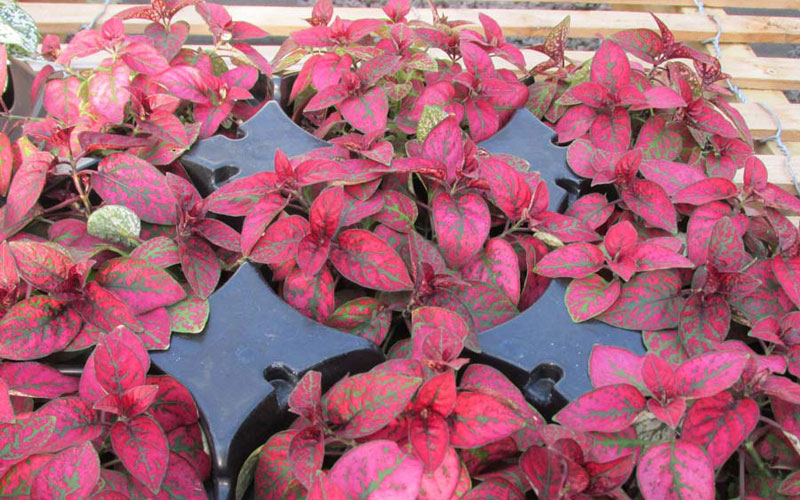
With leaves spotted and dotted with freckles and splotches in shades of white, pink, green or red, Polka-dot Plant is a colorful, whimsical addition to the garden border.

plash Select White Polka Dot Plant will grow to be about 12 inches tall at maturity, with a spread of 12 inches. Its foliage tends to remain dense right to the ground, not requiring facer plants in front. Although it’s not a true annual, this fast-growing plant can be expected to behave as an annual in our climate if left outdoors over the winter, usually needing replacement the following year.
This annual bedding plant does best in full sun to partial shade. It does best in average to evenly moist conditions, but will not tolerate standing water. It is not particular as to soil type or pH. It is highly tolerant of urban pollution and will even thrive in inner city environments. This plant can be propagated by cuttings.
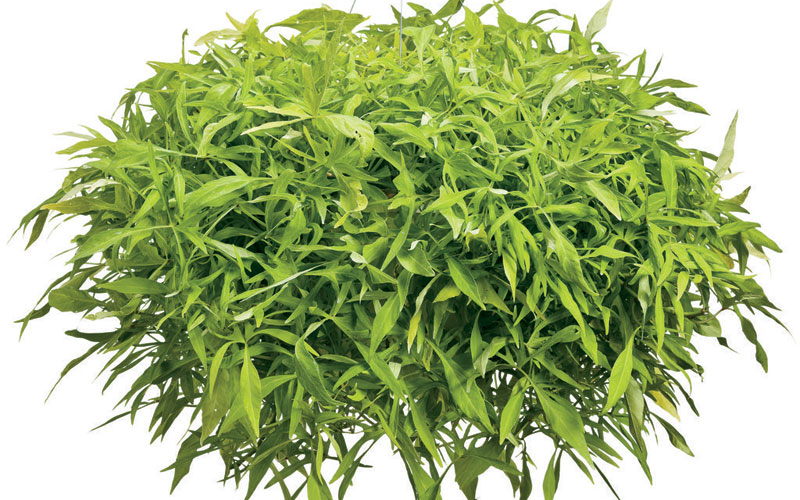
The “Golden Sweet Potato Vine” produces ranks of bright yellow-ochre heart shaped leaves, becoming more halbert-lobed as the plant expands & matures, even forming a fine purple rim in sun–obviously the perfect companion for ‘Ace of Spades’ as well as ‘Blackie'; if grown during the winter in your greenhouse, will produce sparce violet blushed morning glory blossoms–more curious than decorative flowers.
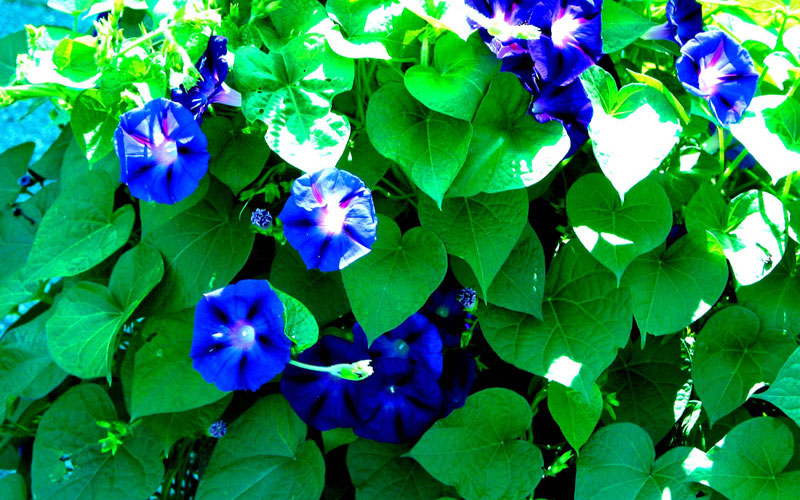
Ipomoea tricolor is a species of flowering plant in the family Convolvulaceae, native to the New World tropics, and widely cultivated and naturalised elsewhere. It is an herbaceous annual or perennial twining liana growing to 2–4 m tall
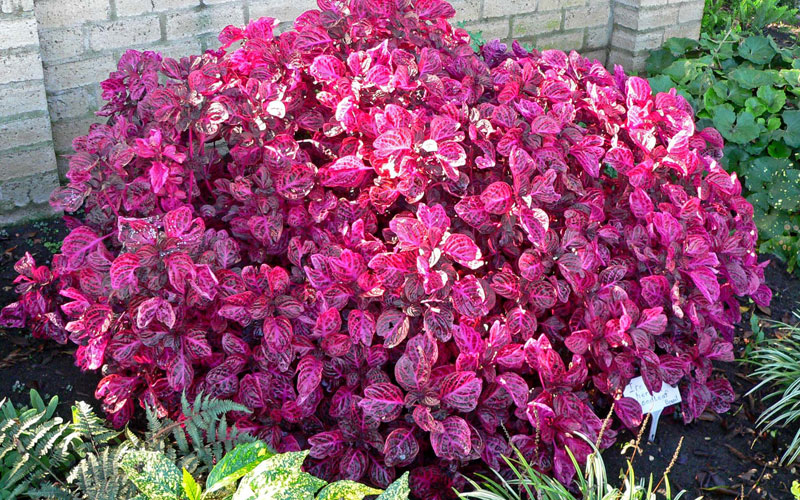
Iresine is a genus of flowering plants in the amaranth family, Amaranthaceae. It contains 20 to 25 species, all of which are native to the American tropics
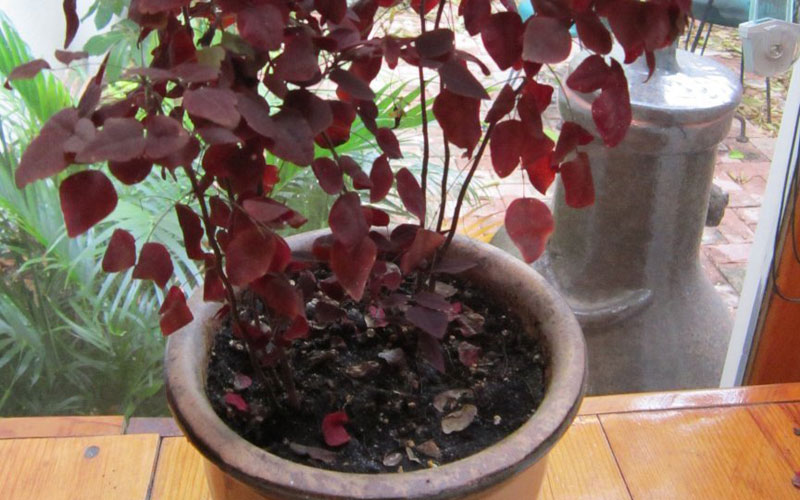
The plant gets its common name from the fact that its leaves, while starting green, turn a deep purple red with exposure to sun. Oxalis hedysaroides is a very mobile plant and will rotate its foliage significantly to follow the sun. At dusk, the plant can seem to quiver slightly as the red leaves partially close by folding in half.
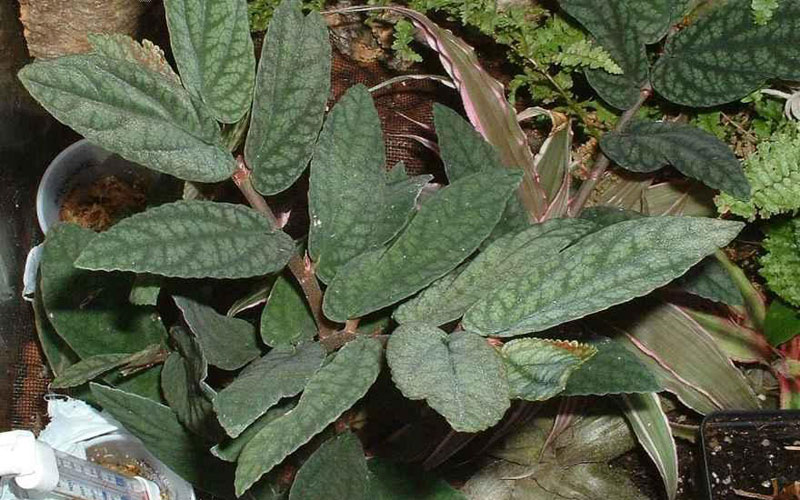
ellionia is a pretty foliage plant that is suited to hanging baskets. Native to South-East Asia, especially to Vietnam, Burma, the Malaysian Peninsula and Polynesia, Pellionia was first cultivated in the early twentieth century. The plants are named in honour of a young French naval officer, A.M.J. Alphonse Pellio (1795— 1868), a member of the French voyage of discovery headed by Louis Freycinet.
Grown for its handsome foliage, Pellionia is a low, bushy plant with pretty, marbled leaves. Some varieties produce small, insignificant flowers in the summer, but they sap energy and nourishment from the leaves, so it is best to pinch them out. The long trailing stems grow with great vigour, and the veined leaves appear in a flat plane opposite each other along the length of the stem. If the stems grow straggly in the summer, pinch them back.
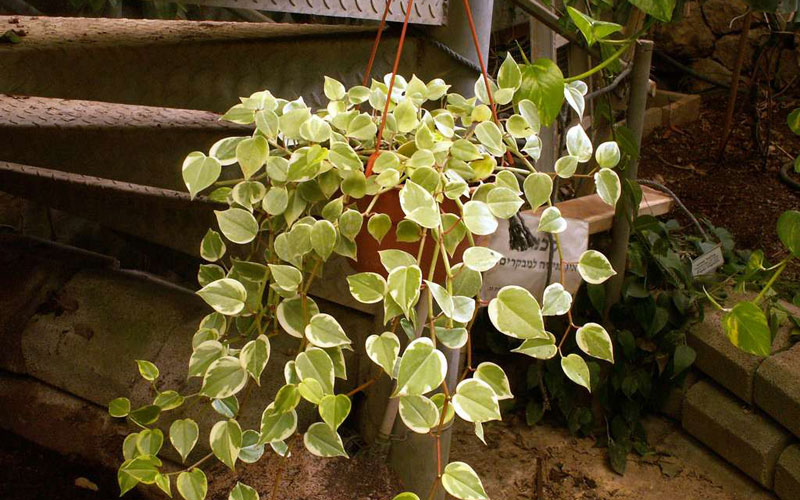
Peperomia scandens ‘Variegata’, also known as Acrocarpidium scandens or Piper scandens, is a great minature for the naturalistic vivarium. Peperomia scandens ‘Variegata’ has small, round succulent leaves that are green and will form a small, trailing plant. Peperomia scandens ‘Variegata’ is a beautiful native of South America is a trailing plant with oval shaped leaves that measure approximately 2″ wide and 2 3/4″ long. This variegated form has nice cream and bright green markings that really stand out. Grow Peperomia scandens ‘Variegata’ as a vine or pinch it back to encourage a more bushy appearance. Peperomia scandens ‘Variegata’ makes a very attractive accent or foreground plant.
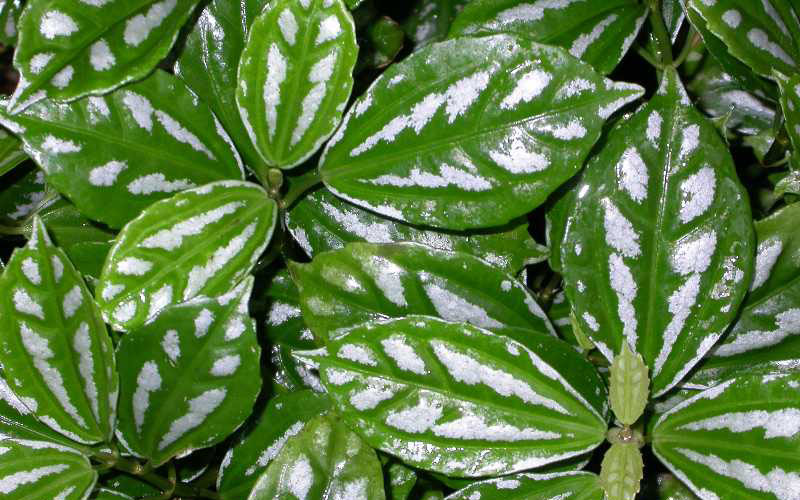
Pilea cadierei is a species of flowering plant in the family Urticaceae, native to China and Vietnam. It is an evergreen perennial growing up to 30 cm tall by 21 cm broad, with dark green oval leaves, each leaf having four raised silvery patches
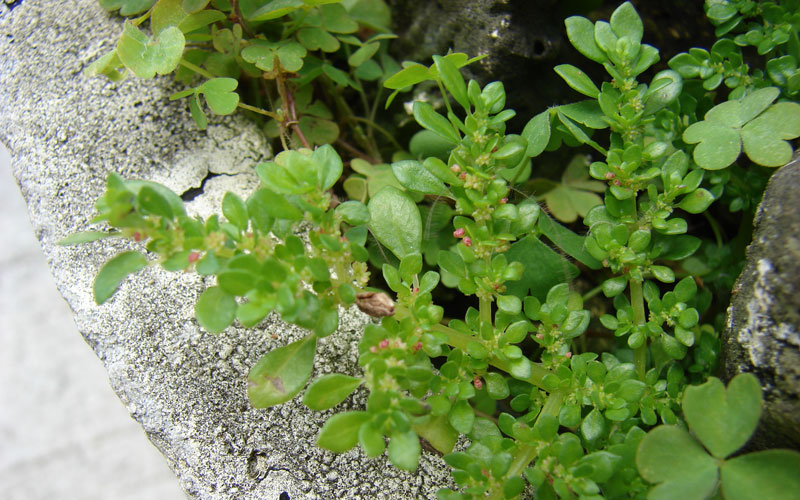
Pilea microphylla also known as Artillery Plant, Gunpowder Plant or brilhantina is an annual plant native to Florida. The plant belongs to the Urticaceae family

